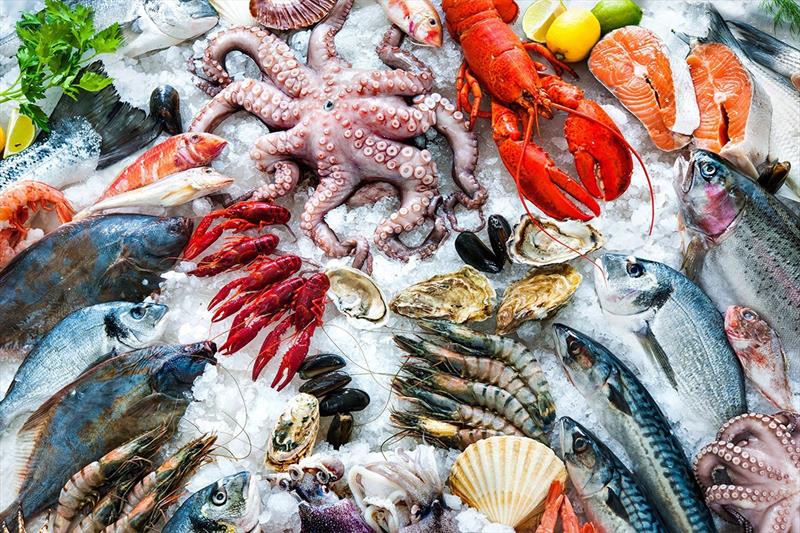
President signs new executive order promoting American seafood competitiveness and economic growth
by NOAA Fisheries 9 May 2020 12:21 UTC

Seafood on ice © Shutterstock
The President signed a new Executive Order promoting American seafood competitiveness and economic growth to propel the United States forward. It calls for the expansion of sustainable U.S. seafood production.
Today, the President signed a new Executive Order promoting American seafood competitiveness and economic growth. This Executive Order will propel the United States forward as a seafood superpower by strengthening the American economy; improving the competitiveness of American industry; ensuring food security; providing environmentally safe and sustainable seafood; supporting American workers; and ensuring coordinated and transparent federal actions.
Specifically, the Executive Order calls for the expansion of sustainable U.S. seafood production through:
- More efficient and predictable aquaculture permitting
- Cutting-edge research and development
- Regulatory reform to maximize commercial fishing
- Enforcement of common-sense restrictions on seafood imports that do not meet American standards
As part of this effort, the Department of Commerce will co-chair a newly-established Seafood Trade Task Force. The agency will work closely with interagency partners to develop a comprehensive interagency seafood trade strategy. The strategy will identify opportunities to improve access to foreign markets through trade policy and negotiations; resolve technical barriers to U.S. seafood exports; and otherwise support fair market access for U.S. seafood products.
In addition, the Secretary of Commerce announced the allocation of $300 million in fisheries assistance funding. The funding is provided by Sec. 12005 of the Coronavirus Aid, Relief, and Economic Security Act, also called the CARES Act. It will be allocated to states, Tribes, and territories with coastal and marine fishery participants who have been negatively affected by COVID-19.
As we all know, the 2020 COVID-19 crisis has created a turning point in the way the seafood industry does business. In addition to other efforts and financial support, this Executive Order and the funding available through the CARES Act creates an exciting new opportunity to address long-term challenges to expanding the domestic seafood sector.